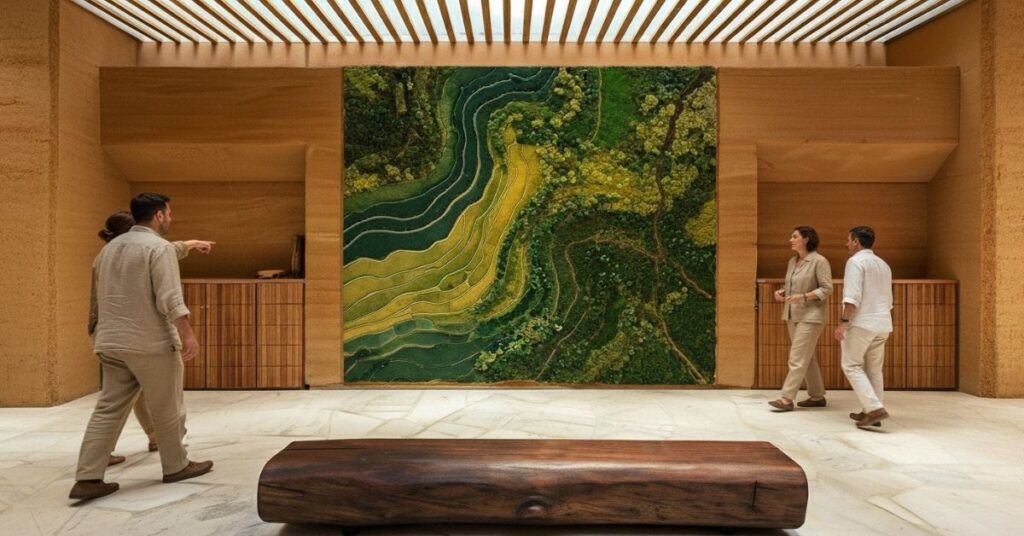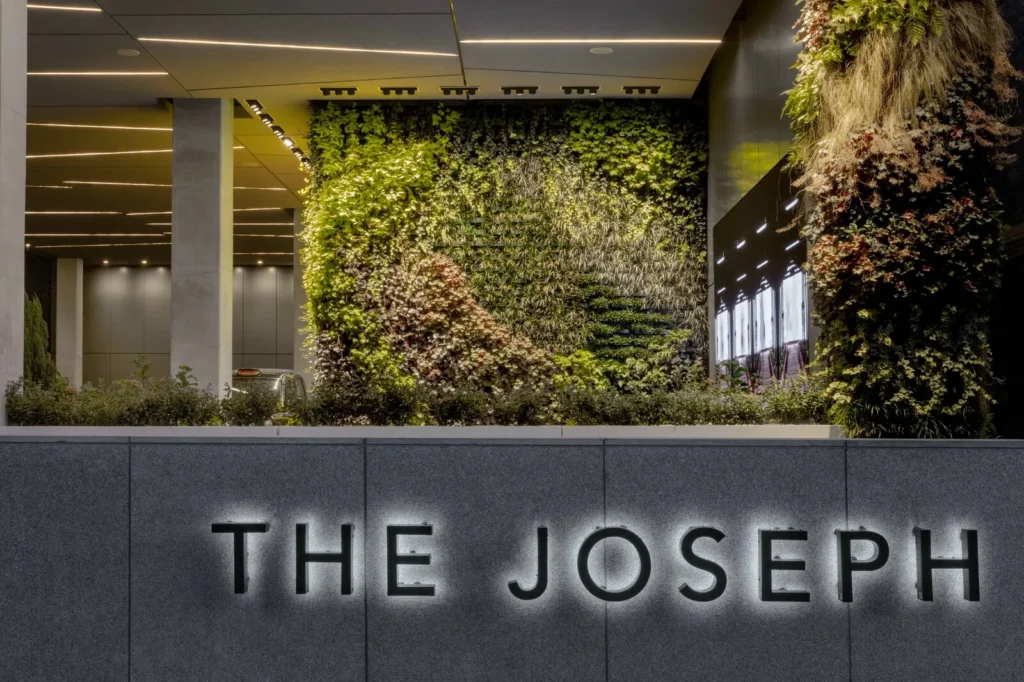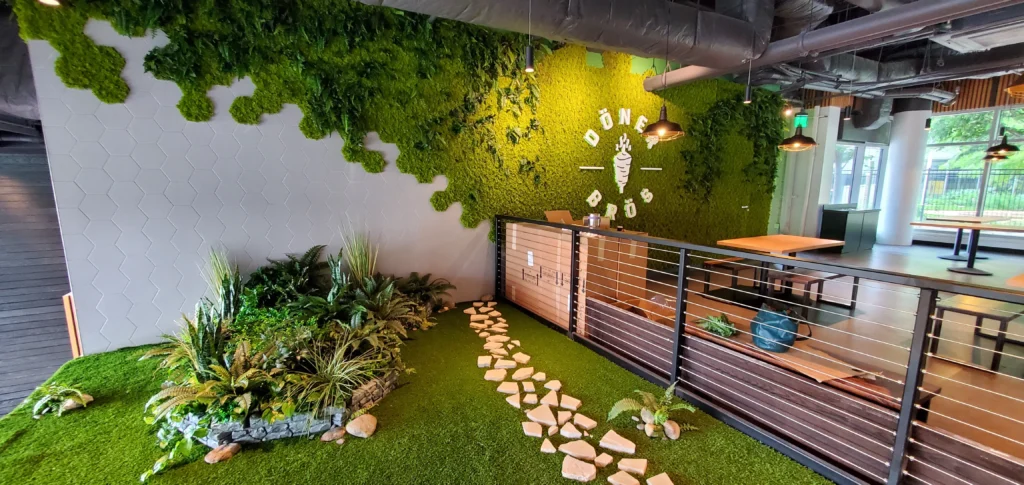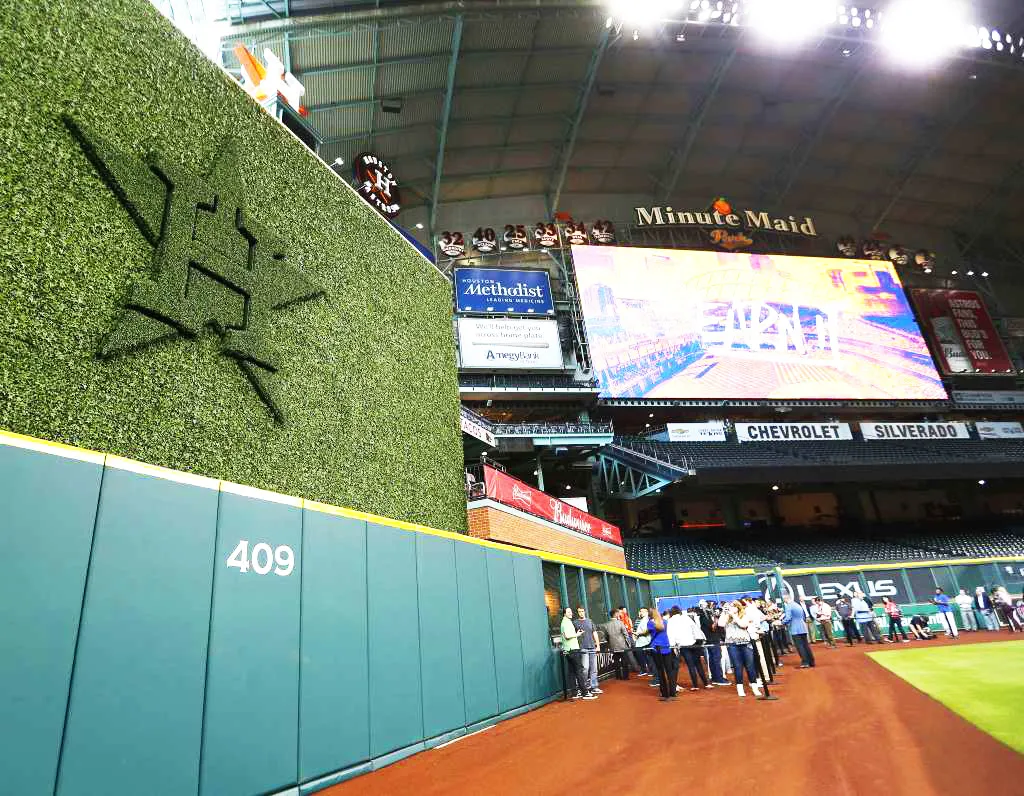

What Are Vertical Gardens?
Commercial vertical gardens—often called green walls—transform blank facades into living, breathing surfaces. They enhance air quality, reduce energy consumption, and promote well-being through the principles of biophilic design. These living systems also act as natural insulation and sound absorbers, reducing ambient noise while maintaining thermal balance.
Beyond their environmental impact, vertical gardens have become a brand signature in modern architecture. They create immersive experiences in spaces such as corporate lobbies, hospitality venues, universities, and healthcare facilities, reinforcing a connection between people and nature.
Are vertical gardens and green walls the same thing?
Yes—and no. Technically, a vertical garden is a synonym of green wall, but the term is often used to describe a specific design configuration where each plant is grown in an individual pot or module integrated into the wall structure.
This modular design allows for easier maintenance and flexibility in plant arrangement, making it particularly suitable for commercial applications where replacement, irrigation, and plant diversity are critical, though modular green wall systems can be also implemented through other techniques such as green wall panels.
In contrast, traditional green walls often rely on continuous substrate layers or hydroponic systems, creating a more seamless but sometimes more complex installation.

Quiet Terrace, Earth Collection, Commercial Vertical Gardens Design by CSI Creative
What materials are available for commercial vertical gardens?
Vertical gardens can be crafted using several material systems—each offering unique aesthetic and functional benefits:
| Material Type | Description | Advantages | Maintenance Needs |
|---|---|---|---|
| Living Greenery | Real plants rooted in soil or hydroponic systems. | Natural air purification, authentic biophilic experience. | Requires irrigation, lighting, and seasonal care. |
| Preserved Greenery | Real plants treated for long-lasting preservation. | Maintains organic look, zero watering required. | Occasional dusting only. |
| Replica (Artificial) Greenery | Synthetic foliage replicating live plants. | No watering, no sunlight, full fire compliance. | Virtually maintenance-free; simple cleaning. |
Modern design systems—like those developed by CSI Creative—combine greenery with acoustic PET felt or wool felt substrates, enhancing both sound absorption and aesthetic appeal. These systems often carry ASTM E84 Class A fire ratings and integrate seamlessly with Division 09 specifications, making them architect-friendly and compliant.
How does maintenance differ across greenery types?
Maintenance levels vary significantly depending on the greenery system:
- Live Vertical Gardens: Require ongoing irrigation, nutrient delivery, and lighting systems. Ideal for spaces with staff trained in horticultural upkeep.
- Preserved Gardens: Perfect for controlled environments. They preserve the lush natural texture without the complexity of irrigation.
- Replica Green Walls: Designed for zero maintenance environments such as retail, transportation hubs, and offices with high traffic. They stay pristine year-round, offering long-term sustainability and fire code compliance thanks to technologies like ThermaLeaf®.
What are the design and acoustic benefits of integrating vertical gardens?
Green walls—especially those built with acoustic felt backing—offer more than just visual beauty. They also perform as passive acoustic panels, diffusing sound energy through the irregular textures of leaves and stems. This combination of biophilic form and acoustic function enhances speech intelligibility and comfort in open-plan environments.
According to acoustic studies, even replica greenery contributes to noise attenuation by disrupting sound reflections and reducing reverberation times—an ideal solution for restaurants, offices, and wellness spaces seeking calmness and clarity.
Where do commercial vertical gardens shine the most?
Different environments benefit from different configurations, and here some use cases from CSI Creative’s past projects:
- Hospitality Spaces:

The Joseph Hotel, Commercial Vertical Gardens Project by CSI Creative
- Restaurants:

Döner Brös Restaurant, Commercial Vertical Gardens Project by CSI Creative
- Atriums and Halls:

Houston Astros Stadium, Commercial Vertical Gardens Project by CSI Creative
Each of these installations not only beautifies a space but also redefines spatial perception, turning otherwise sterile architecture into living environments.
How does CSI Creative implement vertical garden systems?
CSI Creative’s acoustic greenery systems combine artistry and engineering, merging biophilic design with sound absorption and fire-rated performance. Their vertical garden walls integrate Soundcore® PET Felt with replica, preserved, or live greenery, depending on client needs.
Through our brand Plantscape Commercial Silk, CSI ensures all replica greenery is ThermaLeaf® fire-retardant, ASTM E84 Class A certified, and compliant with NFPA 701 standards.
CSI Creative’s process is system-driven—not SKU-based—meaning each installation is custom-engineered to site conditions with shop drawings and labor-efficient mounting systems. Our offerings reflect WELL-certified design principles, backed by Architizer A+ Awards and WELL Building Institute™ recognition.
Final Thought
Commercial vertical gardens redefine architectural expression, bringing together sustainability, acoustics, and biophilia into one elegant system. Whether you’re designing a wellness-focused workplace or a statement hospitality facade, CSI Creative provides a fully customizable, installation-ready solution that blends function with beauty—and keeps maintenance effortless.







